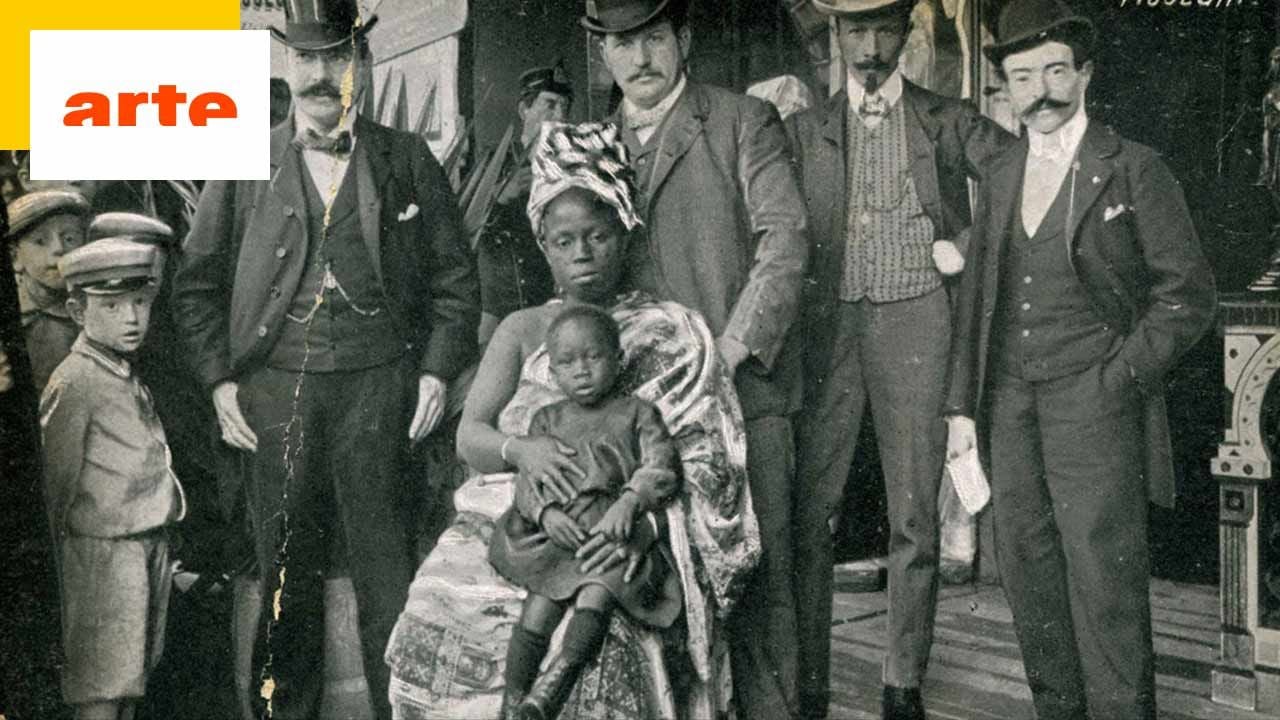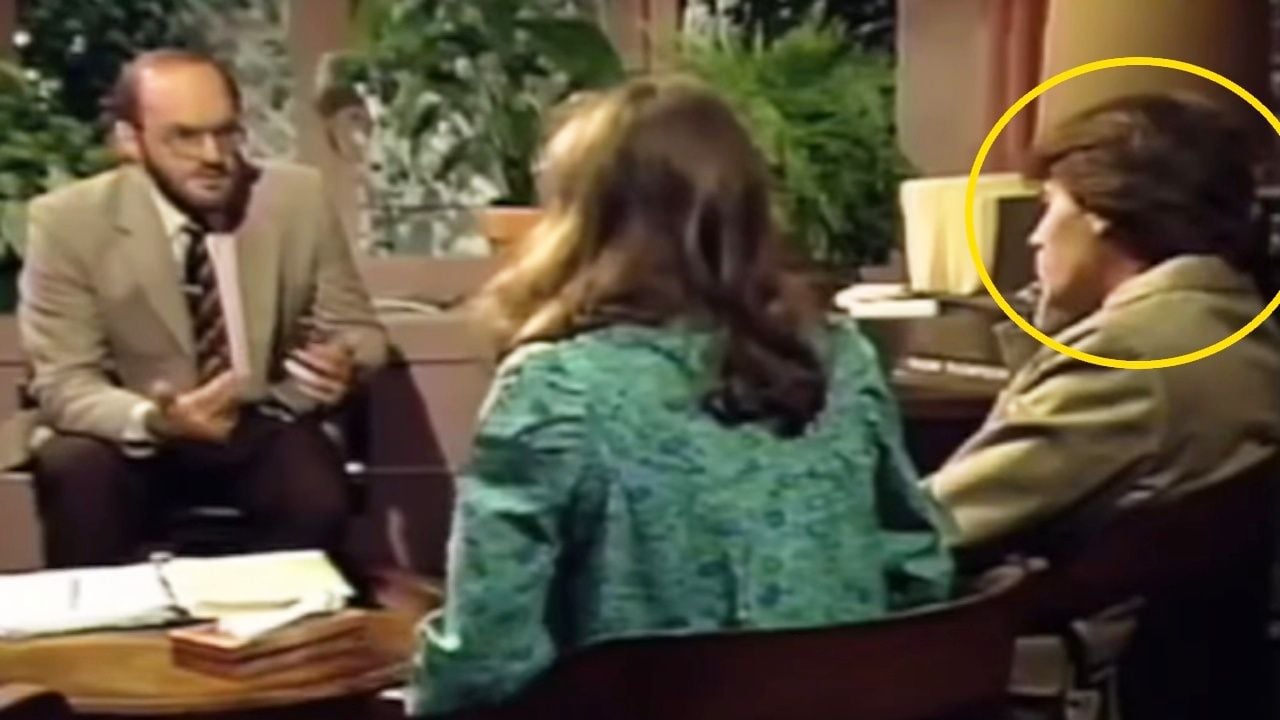Do not miss this April 5 Arte documentary “Wildlife in the Heart of Human Zoos.” A terrible and painful sinking into the past, where people torn from their native land in search of exoticism were exhibited to delight the audience.
Their names are Petit Capelin, Tambo, Moliko, Ota Benga, Marius Kaloe and Jean Thiam. From Fuegian Patagonia, Aboriginal Australia, Kaliana Guyana, Pygmy Congo, Kanak from New Caledonia, these six, as well as another 35,000 from 1810 to 1940, were expelled from their distant lands to respond to the curiosity of the search society. Exotics, in the great metropolises of the West.
Presented as market monsters, even cannibals, exhibited in real human zoos, they were a distraction for the more than a billion and a half Europeans and Americans who came to discover them with their families in circuses or in restored native villages. During large universal and colonial exhibitions …
From “Barbarossa” to “Wild”
“Barbarism is first and foremost a person who believes in barbarism” Writes the great French anthropologist and ethnologist Claude Levy-Strauss in his famous book Race and historyPublished in 1952, this quote, placed at the beginning of the documentary Sauvages at the Center of Human Zoos, is the highlight and common line of the film, shot by Pascal Blanchard and Bruno Victor-Puzbet.
It is important to place this quote in context. The starting point for the Levi-Strauss reflection was a radical rejection of the thesis. Arthur de GobinoFamous for his book Essay on the inequality of human races, Which had a significant impact on the racist theories of the 19th and 20th centuries.
In this paper, published in 1853, he established the existence of three primitive races (white, yellow, and black) whose crossbreeding led to the decadence of the human species. In this work the white race was awarded “Monopoly of beauty, intellect and strength”.
For Claude Levy-Strauss, the diversity of cultures was never perceived as a natural phenomenon, but rather more monstrous. He referred to the evolution that took place when Western civilization changed the term “barbarian” to “wild”; Other different cultural forms in this logic are viscerally rejected and systematically placed in a situation of inferiority.
From Scientific Racism to Popular Racism
“Human zoos are the transition from scientific racism to popular racism” Explains historian Pascal Blanchard, a specialist in the history of the French colonial empire and immigration and co-author of the documentary.
Thus, we are terrified of the horrific and tragic story of Abdelatif Kechiche’s film “Vénus noire”, which depicts the authentic and tragic story of Bartmann, a Khoisan woman of South African descent, dating back to the early 19th century in Europe. Its wide back where it was known by the nickname “Hottentot Venus”.
In the amphitheater, the famous French naturalist Georges Cuvier showed a female genitalia, which he had just removed, before which he would release it a little farther: ““I have never seen a human-like human head.” The audience of prominent colleagues received applause. That was in 1817.
His story, often cited as an example, illustrates how Europeans at the time viewed those who referred to them as “low races”. Thus, the skeleton and replica of the unfortunate woman’s body will be on display at the Palace Museum in Paris until 1976, and it will be necessary to wait until 2002 for her remains to be returned to her home country of South Africa. Ancestors.
The phenomenon of human zoos was really born in 1870-1880. “These people are fascinated because they are portrayed as savages. They are portrayed as abnormal, as deformed, or as having special morals as cannibals. Excitement is fundamental to explaining the success of these human zoos.” Commented by Sandrine Lemmer, historian and documentary filmmaker.
Influenced by the American PT Barnum, the famous organizer of several “ethnological” shows and exhibitions of phenomena, the German Karl Hagenbeck (1844-1913) made a fortune organizing these shows in Europe, including London at the time, and around the world. The capital of human zoos.
In 1906, Hagenbeck’s estate was such that it enabled him to finance with his own funds the construction of a giant zoo in Hamburg, which still exists today. At the same time, PT Barnum would continue to regularly import populations deemed sufficiently exotic, as in 1883, when it brought in a whole group of Aborigines from Australia, who at the time were in official terminology “wildlife and flora”.
Human zoos, a tool for proving colonial power
These human zoos will play a very important role in establishing the colonial power of France and Great Britain. It was necessary for others to be acquainted with public opinion for this imperial power. Thus, the zoos of these people created an opportunity for the authorities to “revive” the imperial conquests for all those who could not travel. The Jardin d’Acclimatation in Paris will be one of the high places to receive all these unfortunate men and women from the ends of the earth and the borders of the empire.
They will then be staged during infamous colonial exhibitions. The Paris World’s Fair in 1900 will attract more than 50 million visitors, who will rush to discover the 80,000 exhibits, restored by a mandatory African village and inhabited by “cannibals” …
Beyond the case of PT Barnum, the United States, in the late 19th and early 20th centuries, did not want to remain on the periphery of European colonial empires. They also sought to expand their influence and established a colonial empire in 1898 by taking the island of Cuba from Spain and then the Philippines. In 1904, at the Giant International Exhibition in St. Louis, Missouri, the United States brought in 1,000. Filipino Igorots. ᲐNever seen. During this exhibition, the famous head of the famous Apache Jeronimo will be exhibited in Tepi …

But what the scientific community and the population of that time liked most were the Congolese pygmies, who were considered to be part of the least civilized ethnic group on the planet. Thus, the Department of Anthropological Studies at the University of St. Louis instructed a famous former missionary, the late researcher Samuel Philip Werner, to take a few samples and place them during this exhibition. Clearly after passing into the hands of scientists who are in a hurry to take all possible anthropometric measurements on them.
The case of Pygmy Ota Benga, which is embodied in a documentary, carries the emotional charge of splitting stones in two. After exhibiting at various international, cultural or scientific events in the United States for ten years, but also at ethnographic shows or human zoos and even for a month at the Bronx Zoo in New York, he regained his freedom in September 1906. Thanks to the public protest campaign, he was outraged by his transfer to the zoo.
After his release, he was placed in an orphanage where he learned English. He even found a small job at a tobacco factory in Lynchburg, Virginia. Free, yes, but deeply unhappy. The only survivor of his clan, he understands that he will never be able to assimilate and prosper this American population; Even fewer to return one day to his country of origin. On the morning of March 20, 1916, as soon as he left the house, he shot himself in the heart with a borrowed pistol. He was buried two days later in Lynchburg Public Cemetery, in an unnamed grave.
A changing gaze
The beginning of the fall of human zoos – and the gaze on them – will begin with World War I: Colonial peoples will be important suppliers of troops in war. Indochina warriors, Senegalese or Moroccan warriors, are all sent to the cauldron of fire and bloody Europe. French General Charles Mangin Was also convinced of the value of Senegalese troops. He found that they were not only resilient in battle, but, in addition, they frightened the Germans, he said. The Germans were now new savages.
In the 1920s the public was tired of these exhibitions and the public authorities wanted to renew their form, and the rise of cinema, more so when it made sense, now attracted the attention of the population fleeing to the exotic. Inequality, stereotypes and racism will now (but not only) be fixed on film. Human zoos were finally banned by the colonial administration during the interwar period: Hubert Liott Will mark the end of any racial exhibition in 1931 as part of the International Colonial Exhibition in Paris.
This did not prevent this infamous exhibition from time to time from the village of Bambula until the 1950s. In the relative indifference and amnesia of the society of that time and with the blessing of the state authorities …
Epilogue …
The remains of Saarji Baartman, who have returned to their native land with honor, these unfortunate and unfortunate exhibits, the remains carved in the name of science are still sleeping in the archives of museums around the world and awaiting the claim of the origin of their countries. stays? Hundreds, definitely. მეტი Probably more. Terrible and painful testimonies of unspeakable suffering, of which it belongs to new generations. “I brought this story from oblivion to soothe the memories,” Publishes this special and exciting documentary as an epilogue.
“Wild, In the Heart of Human Zoos,” aired this Tuesday, April 5, at 8:55 p.m.
Re-available on Arte TV until June 3, 2022.
Source: allocine
Emily Jhon is a product and service reviewer at Gossipify, known for her honest evaluations and thorough analysis. With a background in marketing and consumer research, she offers valuable insights to readers. She has been writing for Gossipify for several years and has a degree in Marketing and Consumer Research from the University of Oxford.






